Wildlife
The natural wealth of the Indian subcontinent has remained unique, mysterious and fascinating for nature lovers. In Indian philosophy, life in any form is deemed sacred and compassion for all living creatures is essential.The rich and fascinating variety of India's wildlife can be seen in the 70 national parks and 411 sanctuaries established by the Government of India in an attempt to conserve this vital resource. If you are interested in wildlife, we can take you to some of the most beautiful parks and sanctuaries of the Indian subcontinent.
Clipper Holidays can arrange an exciting visit to one or more of these sanctuaries with accommodation in clean, comfortable jungle resorts.
Clipper Holidays can arrange an exciting visit to one or more of these sanctuaries with accommodation in clean, comfortable jungle resorts.
Bandipur (Karnataka)
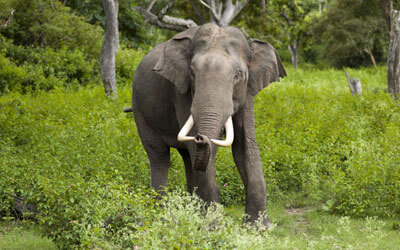 Part of the lushly-forested Deccan Plateau, Bandipur, in Karnataka, offers a rich and varied wildlife habitat. It is a part of a larger national park, which also includes the neighbouring wildlife sanctuaries, of Mudumalai in Tamil Nadu and Wyanad in Kerala. This sanctuary is one of the 15 sanctuaries selected from across the country for Project Tiger, a scheme launched in 1973, by the World Wildlife Fund for Nature, to save the tiger and its habitat. Covered with a mix of deciduous and evergreen forests and scrub and well irrigated by the Moyar river, Bandipur has a fairly open forest area, making it easy for visitors to spot wildlife.
Part of the lushly-forested Deccan Plateau, Bandipur, in Karnataka, offers a rich and varied wildlife habitat. It is a part of a larger national park, which also includes the neighbouring wildlife sanctuaries, of Mudumalai in Tamil Nadu and Wyanad in Kerala. This sanctuary is one of the 15 sanctuaries selected from across the country for Project Tiger, a scheme launched in 1973, by the World Wildlife Fund for Nature, to save the tiger and its habitat. Covered with a mix of deciduous and evergreen forests and scrub and well irrigated by the Moyar river, Bandipur has a fairly open forest area, making it easy for visitors to spot wildlife.This sanctuary sprawls over an area of 874 sq. kilometres. Fauna of this reserve include the Asian elephant, tiger, gaur, sambar, chital, mouse deer, fourhorned antelope, wild pig, black naped hare and the Indian porcupine.
Best time to visit : September to May.
Nagarhole (Karnataka)
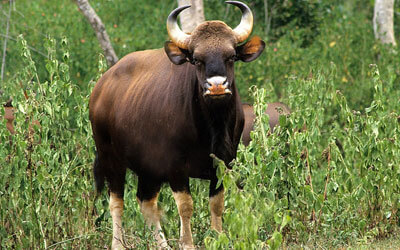 Part of the lushly-forested Deccan Plateau, Bandipur, in Karnataka, offers a rich and varied wildlife habitat. It is a part of a larger national park, which also includes the neighbouring wildlife sanctuaries, of Mudumalai in Tamil Nadu and Wyanad in Kerala. This sanctuary is one of the 15 sanctuaries selected from across the country for Project Tiger, a scheme launched in 1973, by the World Wildlife Fund for Nature, to save the tiger and its habitat. Covered with a mix of deciduous and evergreen forests and scrub and well irrigated by the Moyar river, Bandipur has a fairly open forest area, making it easy for visitors to spot wildlife.
Part of the lushly-forested Deccan Plateau, Bandipur, in Karnataka, offers a rich and varied wildlife habitat. It is a part of a larger national park, which also includes the neighbouring wildlife sanctuaries, of Mudumalai in Tamil Nadu and Wyanad in Kerala. This sanctuary is one of the 15 sanctuaries selected from across the country for Project Tiger, a scheme launched in 1973, by the World Wildlife Fund for Nature, to save the tiger and its habitat. Covered with a mix of deciduous and evergreen forests and scrub and well irrigated by the Moyar river, Bandipur has a fairly open forest area, making it easy for visitors to spot wildlife.This sanctuary sprawls over an area of 874 sq. kilometres. Fauna of this reserve include the Asian elephant, tiger, gaur, sambar, chital, mouse deer, fourhorned antelope, wild pig, black naped hare and the Indian porcupine.
Best time to visit : September to May.
Bheemeswari ( Karnataka )
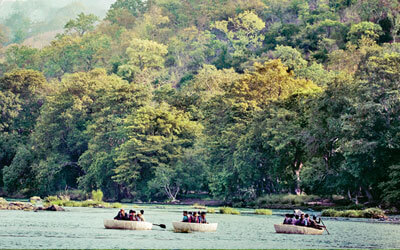 The sparkling blue waters of Cauvery wind through rocks and ravines and fall off the Deccan Plateau to form twin falls of Barachukki and Gaganachukki. About 35 kms downstream is yet another set of falls called Mekedatu ( Goat's Leap ).Lying between these breathtaking cascades is Bheemeswari.A perfect picnic spot, where nature has created a natural habitat for the Masheer fish and a variety of exciting animals.
The sparkling blue waters of Cauvery wind through rocks and ravines and fall off the Deccan Plateau to form twin falls of Barachukki and Gaganachukki. About 35 kms downstream is yet another set of falls called Mekedatu ( Goat's Leap ).Lying between these breathtaking cascades is Bheemeswari.A perfect picnic spot, where nature has created a natural habitat for the Masheer fish and a variety of exciting animals.The lush forest sheltered by steep valleys and scattered by little streams, invite large groups of animals and birds. The fauna of this region include elephants, wild boars, monkeys,jackals,crocodiles,otters ,and even leopards .And of course, there are plenty of birds too! Heron, ibis, cormorant, kingfisher….
Best time to visit: December to March
Ranganthittu Bird Sanctuary (Karnataka)
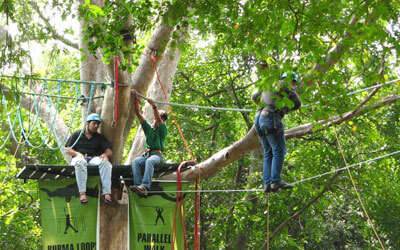 The sanctuary here is a paradise for wildlife enthusiasts. Just glance around and you‘ll find a host of surprises. Crocodiles basking under the sun, otters running free, flocks of birds .. the white ibis, egret ,heron partridge etc gathered on tiny islands… Ranganthittu is indeed a visual delight .Birds that come all the way from Siberia , Australia and even North America can be spotted here.
The sanctuary here is a paradise for wildlife enthusiasts. Just glance around and you‘ll find a host of surprises. Crocodiles basking under the sun, otters running free, flocks of birds .. the white ibis, egret ,heron partridge etc gathered on tiny islands… Ranganthittu is indeed a visual delight .Birds that come all the way from Siberia , Australia and even North America can be spotted here.Best time to visit: June to October
B.R. Hills Wildlife Sanctuary (K.Gudi - Karnataka)
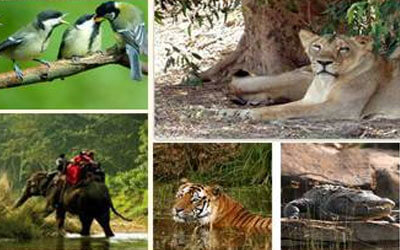 At a height of 5,091 ft., this is a must for wildlife lovers. Dancing trees, whistling winds and swirling streams form a backdrop to some very rare animals – Gaur, chital, sambar, bears ,elephants, panthers ,tigers…. And if you're looking for a place that is clam and peaceful, the Biligirirangaswamy Temple ( from which the hill derives its name) is the right place. The serene surroundings, the soft reverberations of the bells and the songs of the birds in the background at this complex are sure to rejuvenate your souls.
At a height of 5,091 ft., this is a must for wildlife lovers. Dancing trees, whistling winds and swirling streams form a backdrop to some very rare animals – Gaur, chital, sambar, bears ,elephants, panthers ,tigers…. And if you're looking for a place that is clam and peaceful, the Biligirirangaswamy Temple ( from which the hill derives its name) is the right place. The serene surroundings, the soft reverberations of the bells and the songs of the birds in the background at this complex are sure to rejuvenate your souls.Best time to visit: September to May
Bhadra Wildlife Sanctuary (Karnataka)
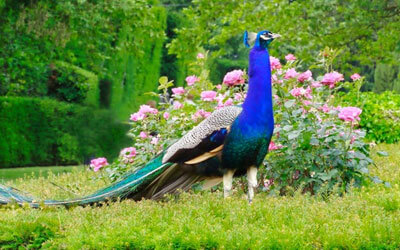 Mysterious and magical.. The secrets of the jungle unwind as you go deep into the seemingly silent forest. Birds whistle,Monkeys chatter Elephants trumpet in delight…. Bhadra wildlife Sanctuary in the Chickmangalur and Shimoga Districts is one of the most fascinating sanctuaries, sheltering some exquisite flora and fauna. The great Indian Gaur,barking deer,flying fox,mongoose, elephant, panther, macaque, bluejay,kingfisher,peacock, all have made their home here.
Mysterious and magical.. The secrets of the jungle unwind as you go deep into the seemingly silent forest. Birds whistle,Monkeys chatter Elephants trumpet in delight…. Bhadra wildlife Sanctuary in the Chickmangalur and Shimoga Districts is one of the most fascinating sanctuaries, sheltering some exquisite flora and fauna. The great Indian Gaur,barking deer,flying fox,mongoose, elephant, panther, macaque, bluejay,kingfisher,peacock, all have made their home here.Best time to visit: November to March
The Annamalais or “Mountains of The Elephants" (Kerala/Tamilnadu)
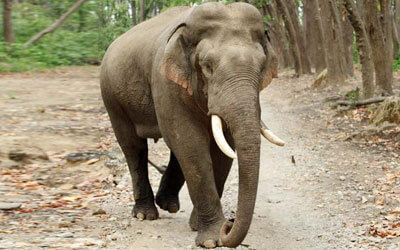 The Annamalais lie in the High Ranges within the Western Ghats.The Annamalais rises to a series of plateaus.The Topslip-Parambikulam Plateau ( 800 m ) ascends to the Valparai Plateau,between 1,000 and 1250 m,in the heart of the plantations.The elevation range ensures an array of habitats. The Indira Gandhi Wildlife Sanctuary and National Park extends over this region for approx 960 sq km, although this reserve lies in Tamilnadu, it is contiguous with Kerala's Parambikulam Wildlife Sanctuary in the West and Eravikulam National park in the South. Inhabiting this dense forest and grassland are many endangered species such as the Nilgiri langur ,the lion tailed macaque and the nilgiri tahr,gaur and a fair number of elephants, leopard- cat, indian gaint squirrel, wild dogs, malabar grey hornbill etc.. December to April
The Annamalais lie in the High Ranges within the Western Ghats.The Annamalais rises to a series of plateaus.The Topslip-Parambikulam Plateau ( 800 m ) ascends to the Valparai Plateau,between 1,000 and 1250 m,in the heart of the plantations.The elevation range ensures an array of habitats. The Indira Gandhi Wildlife Sanctuary and National Park extends over this region for approx 960 sq km, although this reserve lies in Tamilnadu, it is contiguous with Kerala's Parambikulam Wildlife Sanctuary in the West and Eravikulam National park in the South. Inhabiting this dense forest and grassland are many endangered species such as the Nilgiri langur ,the lion tailed macaque and the nilgiri tahr,gaur and a fair number of elephants, leopard- cat, indian gaint squirrel, wild dogs, malabar grey hornbill etc.. December to April Periyar ( Kerala)
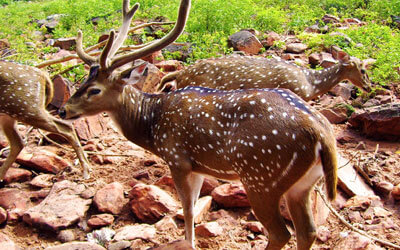 The Periyar Wildlife Sanctuary, in Kerala, is one of the 15 Project Tiger reserves in India. Over a century ago, a British engineer, Col. J. Pennycuick, chalked out a plan to dam the Periyar River; subsequently, a dam was constructed at the proposed site in 1895. This resulted in the adjoining forests being granted protection, by the Maharaja of Travancore.
The Periyar Wildlife Sanctuary, in Kerala, is one of the 15 Project Tiger reserves in India. Over a century ago, a British engineer, Col. J. Pennycuick, chalked out a plan to dam the Periyar River; subsequently, a dam was constructed at the proposed site in 1895. This resulted in the adjoining forests being granted protection, by the Maharaja of Travancore.The 55 sq. km reservoir and its surrounding forests provide protection to the animals within. Today, Periyar is undeniably one of the most impressive wildlife sanctuaries in the world. The terrain is basically hilly, and the only flat areas of the sanctuary are the grasslands, at the edges of the lakes. Impregnable forests and open grasslands make for a sustaining environment, for both the carnivore and herbivore population of the reserve.
Periyar is famous for its pachyderm population, which number around 800. Periyar is probably one of the few places where one can observe elephants in their natural surroundings, unhindered, and approach to within 20 meters of them, fearlessly. . Apart from elephants, the other animals to be seen in the sanctuary are gnar, wild pigs, sambar, barking deer, mouse deer, dhole, lion-tailed macaque, the Nilgiri langur, and very rarely, a tiger. There are now an estimated 40 tigers in the Periyar reserve.
Best time to visit : October to April.
Ranthambore (Rajasthan)
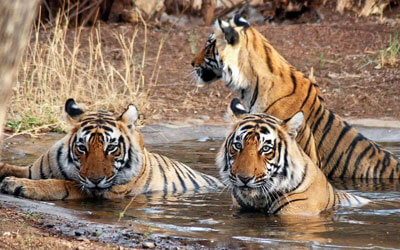 Located on the eastern fringe of the Thar desert, this area was set up as a sanctuary in 1955. Later on its status was upgraded to that of a national park.It is a tiger reserve under Project Tiger. Extensions of the Aravalli & Vindhyan hills form an important physiographic feature of these hills. Artificial lakes form an important part of this park.
Located on the eastern fringe of the Thar desert, this area was set up as a sanctuary in 1955. Later on its status was upgraded to that of a national park.It is a tiger reserve under Project Tiger. Extensions of the Aravalli & Vindhyan hills form an important physiographic feature of these hills. Artificial lakes form an important part of this park.Fauna: tiger , leopard , hyena , sambar, chital , langur , wild boar, gray drongo and many species of birds including the crested serpent eagle
Best time to visit : October to February
Kanha National Park (Madhya Pradesh)
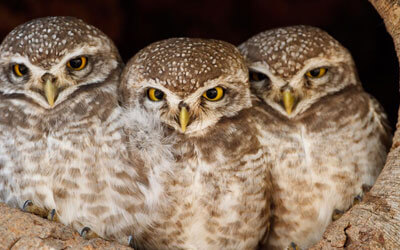 Kanha, setting for Rudyard Kipling's "Jungle Book" is located in a horse shoe shaped valley and supports 22 species of mammals in the central parkland and adjoining plateaus.Over the years,animals at Kanha have become bolder and more confident, making the park excellent for wildlife viewing and photography.Fauna here include tiger, leopard,barasingha, gnar, sambar, blackbuck, nilgai, sloth bear, barking deer, longbilled vultures, barn owl, black headed oriole and the shaheen falcon.
Kanha, setting for Rudyard Kipling's "Jungle Book" is located in a horse shoe shaped valley and supports 22 species of mammals in the central parkland and adjoining plateaus.Over the years,animals at Kanha have become bolder and more confident, making the park excellent for wildlife viewing and photography.Fauna here include tiger, leopard,barasingha, gnar, sambar, blackbuck, nilgai, sloth bear, barking deer, longbilled vultures, barn owl, black headed oriole and the shaheen falcon.Best time to visit : October to April
Bandhavgarh National Park (Madhya Pradesh)
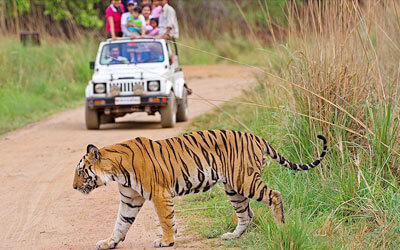 Located in the Vindhya hills, Bandhavgarh encompasses 32 hills covered with a mixed forest of sal, dhobin and saga and large stretches of grasslands with bamboo groves. Dominated by the 2000 years old fort which is believed to have been built by Lord Rama, (the hero of the great epic Ramayana) which gives the park its unique, dramatic splendour. Bandhavgarh is most famous for its tigers.
Located in the Vindhya hills, Bandhavgarh encompasses 32 hills covered with a mixed forest of sal, dhobin and saga and large stretches of grasslands with bamboo groves. Dominated by the 2000 years old fort which is believed to have been built by Lord Rama, (the hero of the great epic Ramayana) which gives the park its unique, dramatic splendour. Bandhavgarh is most famous for its tigers.Best time to visit : October to April
Gir National Park (Gujarat)
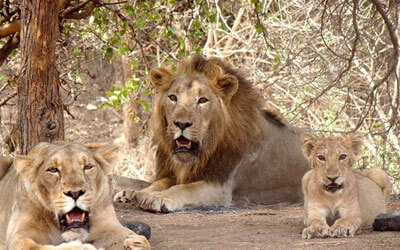 The Gir national park and wildlife sanctuary is India's most important protected area. This is the only home of the Asiatic lion that once roamed over large areas. It was set up in 1965 and at present the national park forms a core area of about 300 sq. kms. , while the sanctuary serves as a 1412 sq. km. buffer zone around it.
The Gir national park and wildlife sanctuary is India's most important protected area. This is the only home of the Asiatic lion that once roamed over large areas. It was set up in 1965 and at present the national park forms a core area of about 300 sq. kms. , while the sanctuary serves as a 1412 sq. km. buffer zone around it.This area was originally protected by the state of Junagadh and hunting was prohibited in 1948. Only 10% of the area is forested.Fauna Asiatic lion, sambar, chital, langur, wild boar, wild cat, jackal, hyena , gray drongo, white necked storks, pythons and many other species of birds and animals.
Best time to visit : October to March
Kaziranga National Park (Assam)
 Located on the banks of the mighty river Brahmaputra,Kaziranga is one of the last strongholds of the endangered Indian one-horned Rhinoceros.With open country covered with elephant grass, Kaziranga gives the visitor a chance to see its large faunal assemblage at fairly close quarters.
Located on the banks of the mighty river Brahmaputra,Kaziranga is one of the last strongholds of the endangered Indian one-horned Rhinoceros.With open country covered with elephant grass, Kaziranga gives the visitor a chance to see its large faunal assemblage at fairly close quarters.Fauna: one-horned Indian rhinoceros, elephants, deer.
Best time to visit : November to March.
Corbett National Park (Uttar Pradesh)
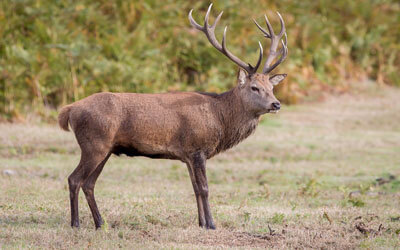 Named after the British hunter Jim Corbett, famous for his book "Maneaters of Kumaun". He shot more wildlife with his camera than his gun. This is India's oldest and perhaps the most famous national park set up in 1936 in the lower hills of Kumaon. It has an area of 520 sq km including the reservoir of Ramganga dam. The river Ramganga flows through this park. It was also known as Hailey National Park & Ramganga National Park This area is a tiger reserve under Project Tiger.
Named after the British hunter Jim Corbett, famous for his book "Maneaters of Kumaun". He shot more wildlife with his camera than his gun. This is India's oldest and perhaps the most famous national park set up in 1936 in the lower hills of Kumaon. It has an area of 520 sq km including the reservoir of Ramganga dam. The river Ramganga flows through this park. It was also known as Hailey National Park & Ramganga National Park This area is a tiger reserve under Project Tiger.Fauna: tiger, leopard, elephant, some species of aquatic birds, gharial, wild boar, sambhar, cheetal, hog deer, barking deer. Best time to visit : October to April.



